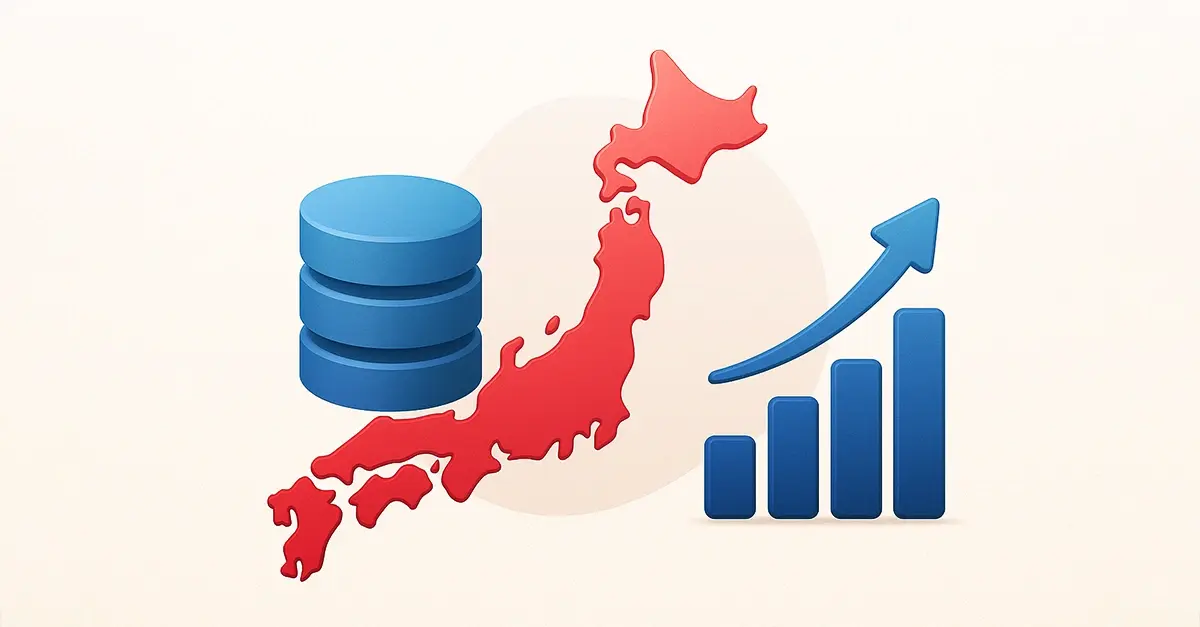Compliance in Technographic Data
Technographic data compliance is an emerging priority for B2B organizations that use company-level technology insights to inform sales, marketing, or risk decisions. While technographics typically do not involve personal data, their use in automated workflows, enrichment systems, or outreach campaigns brings them into the scope of privacy, governance, and audit frameworks.
As data regulations evolve, expectations around transparency, sourcing, and infrastructure continue to rise. Teams need to understand where their technographic data comes from, how it is processed, and whether it aligns with internal policies and external requirements like GDPR or CCPA. The risks are not only legal. Poor governance around data can impact campaign performance, CRM integrity, and platform security.
This checklist outlines the key areas B2B teams should review when evaluating a technographic data provider or managing internal compliance. From source validation to audit readiness, each section is designed to help you apply the same rigor to technographics that your organization already expects from contact and firmographic data.
1. Confirm Data Source Transparency
Technographic data is only as trustworthy as its origin. Before integrating any dataset into your CRM or go-to-market systems, it is critical to understand where the information comes from, how it was collected, and whether it meets your company’s legal and operational standards.
Look for data providers who disclose the original sources behind their insights. This may include official registries, licensed databases, verified partner networks, or direct integrations. If a vendor cannot clearly explain how they gather and validate technographic signals, the data should not be considered reliable or compliant.
Opaque sourcing often means reliance on scraping, inferred logic, or unauthorized enrichment. These methods not only introduce risk, they also reduce the accuracy of the signals your team is using to segment, prioritize, or target accounts.
A strong vendor will provide documentation, data dictionaries, and processing logic that explain where each attribute comes from and how it is maintained. This transparency supports compliance reviews, internal audits, and platform trust.
When reviewing a technographic provider, confirm:
- Whether the sources are clearly disclosed and legally obtained
- How frequently each data attribute is refreshed or revalidated
- Whether the provider offers lineage documentation for compliance teams
Knowing exactly where your data comes from sets the foundation for every other compliance standard that follows.
2. Validate Consent and Legal Grounds
Even though technographic data does not typically include personal identifiers, it still must be processed under a valid legal basis. This is especially important when the data influences automated decision-making, prospect scoring, or outbound communications.
Under frameworks like GDPR and CCPA, organizations must be able to justify the use of any data, even if it is company-level, when it plays a role in targeted engagement. Most technographic data is processed under legitimate interest, but that basis still requires transparency and documentation.
The compliance impact increases when technographic data is paired with contact records or applied in profiling systems. This makes it essential to evaluate not only the dataset itself, but also how it is integrated into downstream workflows.
To meet compliance expectations, B2B teams should confirm:
- The provider’s legal basis for processing
- Whether any personal data is inferred, enriched, or combined downstream
- That documentation is available to support internal audits or regulatory inquiries
Establishing a clear legal foundation is critical to using technographic data responsibly across sales, marketing, and compliance operations.
3. Evaluate Vendor Hosting and Residency
Technographic data may not include personal information, but where that data is stored and processed still matters. Data residency impacts how regulations apply, especially for companies operating across borders or serving customers in regions with strict privacy laws.
Teams should understand where their technographic data lives. This includes both the primary storage location and any subprocessors involved in processing or delivery. For organizations operating in the European Union, using providers that host data within the EU can simplify compliance and reduce risk. It also supports internal requirements for audit readiness, vendor management, and data sovereignty.
When reviewing a vendor’s infrastructure, request documentation that outlines hosting locations, cloud providers, and any third-party services involved in storing or moving data. Confirm whether those data providers meet the regulatory and security standards required by your organization.
Key questions to address include:
- Is the data hosted in a jurisdiction that aligns with our regulatory obligations?
- Does the provider use subprocessors, and if so, are they clearly listed and contractually bound?
- Are hosting environments audited or certified under recognized standards?
Even if the dataset itself is compliant, poor infrastructure decisions can introduce unnecessary exposure. Hosting and residency should be part of every technographic data compliance review.
4. Audit Update Frequency and Accuracy Claims
Technographic data compliance is not just about how data is collected, it is also about how well it is maintained. If datasets are outdated, incomplete, or based on infrequent refresh cycles, they can introduce risk into decision-making and reduce the reliability of GTM systems that depend on accuracy.
A strong data provider should have a documented refresh process. This includes regular update intervals, validation logic, and clear deduplication methods. If data is only updated annually or relies heavily on third-party feeds without reprocessing, it may fail to meet internal standards for data governance or compliance reviews.
Teams should also evaluate whether vendors provide visibility into how data changes over time. Historical tracking and change logs support auditability and help organizations understand how signals evolve within their pipeline or segmentation logic.
When assessing a provider’s update and accuracy posture, confirm the following:
- How often are core technographic fields refreshed or revalidated?
- Is there a version history or update log that supports data governance?
- Does the provider use deduplication and quality scoring to ensure reliability?
Data accuracy and recency are essential components of a compliant and operationally effective technographic data strategy.
5. Apply Role-Based Access Controls
Once technographic data enters your systems, controlling who has access to it becomes part of your compliance responsibility. While technographic attributes are not typically sensitive on their own, they often feed into systems that include personal information, strategic segmentation, or customer scoring models.
Implementing role-based access controls helps limit unnecessary exposure and ensures that only authorized users can access, modify, or export technographic datasets. This also reduces the risk of accidental misuse or non-compliant processing, especially in environments where sales, marketing, and data teams work across multiple platforms.
Access controls should be aligned with internal data governance policies and mapped to specific roles or functions. For example, a sales operations analyst may need access to raw enrichment fields, while a marketing campaign manager only requires access to filtered outputs within an automation platform.
To maintain both security and compliance, organizations should:
- Assign access based on roles and responsibilities
- Limit data export permissions to approved users
- Monitor and log access to sensitive data fields for traceability
Technographic data is most valuable when it flows through the organization cleanly and securely. Role-based controls help ensure that data is used responsibly, with accountability built in.
6. Align With Consent Frameworks and Regulations
Even when technographic dataset is non-personal, its use in outbound campaigns, profiling, or enrichment can intersect with consent requirements, especially in regions governed by GDPR, ePrivacy, or similar frameworks. The regulatory burden increases when technographic signals are combined with contact information or used to drive personalized outreach.
Organizations must ensure that technographic data is applied within systems that respect consent frameworks. This includes understanding how technographic attributes influence targeting decisions and whether those decisions are subject to marketing consent rules. In many cases, companies use technographics to decide which contacts to email, call, or retarget, which brings consent and opt-out policies into play.
To stay compliant, teams should map the flow of technographic data through all systems that support engagement. Any time technographics are used to trigger outreach, it is critical to ensure that those contacts have given appropriate consent or fall under an accepted legal basis.
Key questions to address include:
- Are we using technographic data to make decisions that affect personal outreach?
- Are those outreach efforts covered by valid consent or a documented legal basis?
- Do we have a process for suppressing or excluding contacts based on opt-out or DNC status?
Technographic data should always be applied in a way that complements, not overrides, your organization’s consent and privacy policies.
7. Document Everything for Audits
Technographic data compliance does not end once a vendor is selected or a dataset is integrated. Ongoing documentation is essential to maintain audit readiness and prove that your organization has taken the necessary steps to use data responsibly.
Every aspect of your technographic data pipeline should be documented. This includes the sourcing evaluation, the legal basis for processing, hosting and access details, and how the data flows through internal systems. If regulators, auditors, or internal stakeholders request information, this documentation allows you to respond with confidence and transparency.
Compliance teams should maintain a central record that includes:
- Vendor due diligence, including sourcing and processing methods
- Contracts, SLAs, and any subprocessor disclosures
- Data mapping documentation that shows how technographic attributes are used across systems
- Records of access control policies, change logs, and update intervals
Establishing a compliance record for technographic data shows that your organization treats all business intelligence with the same rigor applied to personal data. It also supports faster responses during audits, M&A reviews, and procurement evaluations.
Documentation is not just a formality. It is what allows good data practices to scale and stand up to scrutiny.
Conclusion
Technographic data plays a critical role in modern B2B go-to-market strategies, but its value depends on how responsibly it is sourced, managed, and applied. As compliance standards evolve, organizations must bring the same level of oversight to technographics that they already apply to contact and firmographic data.
This checklist is designed to help your team evaluate vendors, review internal practices, and strengthen governance across your data stack. Whether you are enriching CRM data records, building ICP models, or powering account-based campaigns, technographic data compliance is essential to ensuring accuracy, trust, and long-term scalability.
If you are evaluating technographic data providers or refining your data governance approach, our team can help. InfobelPRO offers structured, privacy-aligned B2B intelligence that integrates seamlessly into marketing, sales, and compliance workflows.
Get in touch to learn how our datasets support secure, scalable growth.






Comments